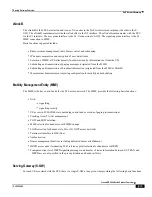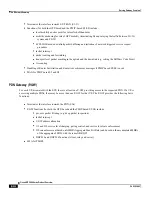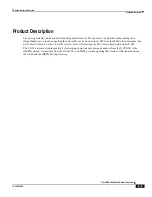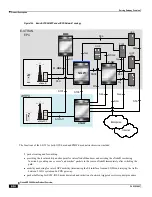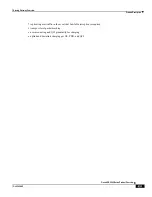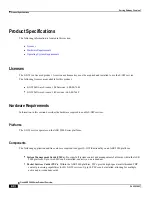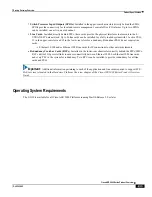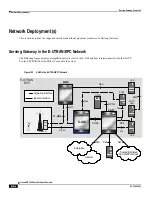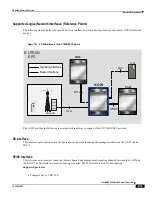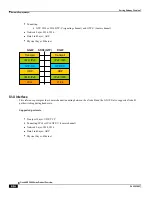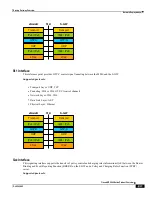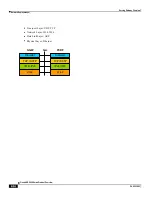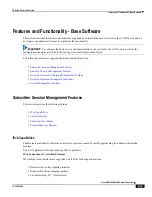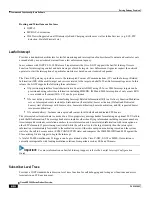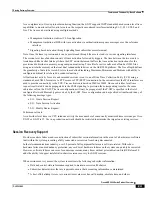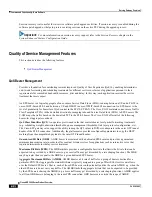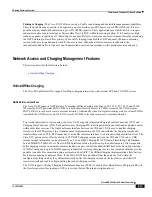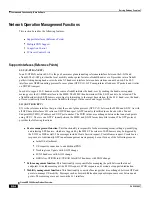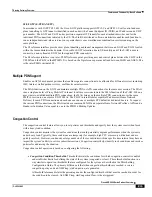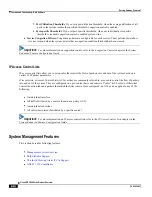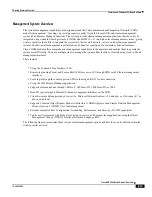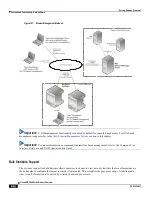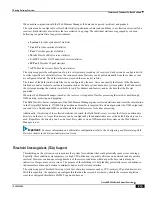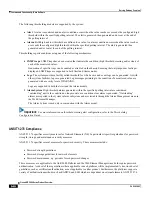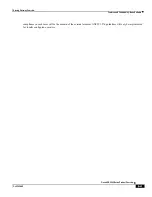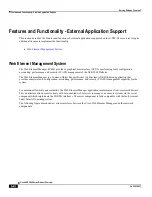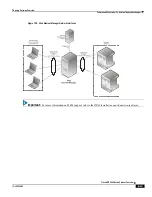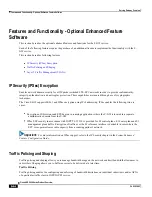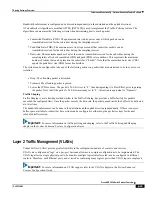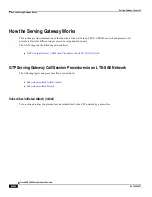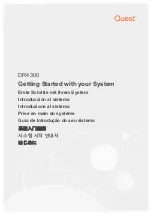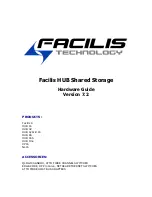
Serving Gateway Overview
Features and Functionality - Base Software ▀
Cisco ASR 5000 Series Product Overview ▄
OL-22938-02
As a complement to Cisco's protocol monitoring function, the S-GW supports 3GPP standards based session level trace
capabilities to monitor all call control events on the respective monitored interfaces including S1-U, S11, S5/S8, and
Gxc. The trace can be initiated using multiple methods:
Management initiation via direct CLI configuration
Management initiation at HSS with trace activation via authentication response messages over S6a reference
interface
Signaling based activation through signaling from subscriber access terminal
Note: Once the trace is provisioned it can be provisioned through the access cloud via various signaling interfaces.
The session level trace function consists of trace activation followed by triggers. The time between the two events is
treated much like Lawful Intercept where the EPC network element buffers the trace activation instructions for the
provisioned subscriber in memory using camp-on monitoring. Trace files for active calls are buffered as XML files
using non-volatile memory on the local dual redundant hard drives on the ASR 5000 platform. The Trace Depth defines
the granularity of data to be traced. Six levels are defined including Maximum, Minimum and Medium with ability to
configure additional levels based on vendor extensions.
All call control activity for active and recorded sessions is sent to an off-line Trace Collection Entity (TCE) using a
standards-based XML format over a FTP or secure FTP (SFTP) connection. In the current release the IPv4 interfaces are
used to provide connectivity to the TCE. Trace activation is based on IMSI or IMEI. Once a subscriber level trace
request is activated it can be propagated via the S5/S8 signaling to provision the corresponding trace for the same
subscriber call on the P-GW. The trace configuration will only be propagated if the P-GW is specified in the list of
configured Network Element types received by the S-GW. Trace configuration can be specified or transferred in any of
the following message types:
S11: Create Session Request
S11: Trace Session Activation
S11: Modify Bearer Request
Performance Goals:
As subscriber level trace is a CPU intensive activity the max number of concurrently monitored trace sessions per Cisco
P-GW or S-GW is 32. Use in a production network should be restricted to minimize the impact on existing services.
Session Recovery Support
Provides seamless failover and reconstruction of subscriber session information in the event of a hardware or software
fault within the system preventing a fully connected user session from being disconnected.
In the telecommunications industry, over 90 percent of all equipment failures are software-related. With robust
hardware failover and redundancy protection, any card-level hardware failures on the system can quickly be corrected.
However, software failures can occur for numerous reasons, many times without prior indication. StarOS Release 9.0
adds the ability to support stateful intra-chassis session recovery for S-GW sessions.
When session recovery occurs, the system reconstructs the following subscriber information:
Data and control state information required to maintain correct call behavior
Subscriber data statistics that are required to ensure that accounting information is maintained
A best-effort attempt to recover various timer values such as call duration, absolute time, and others
Summary of Contents for ASR 5000 Series
Page 1: ......
Page 26: ......
Page 48: ...New In Release 10 0 SCM Features Cisco ASR 5000 Series Product Overview OL 22938 02 ...
Page 50: ......
Page 58: ......
Page 68: ......
Page 126: ......
Page 138: ......
Page 146: ......
Page 218: ......
Page 236: ......
Page 356: ......
Page 374: ......
Page 422: ......
Page 496: ......
Page 572: ......
Page 654: ......
Page 700: ......
Page 726: ......
Page 784: ......
Page 816: ......
Page 844: ......
Page 906: ......
Page 926: ......
Page 942: ......
Page 943: ...Cisco ASR 5000 Series Product Overview OL 22938 02 Chapter 30 Technical Specifications ...
Page 966: ......
Page 972: ......

